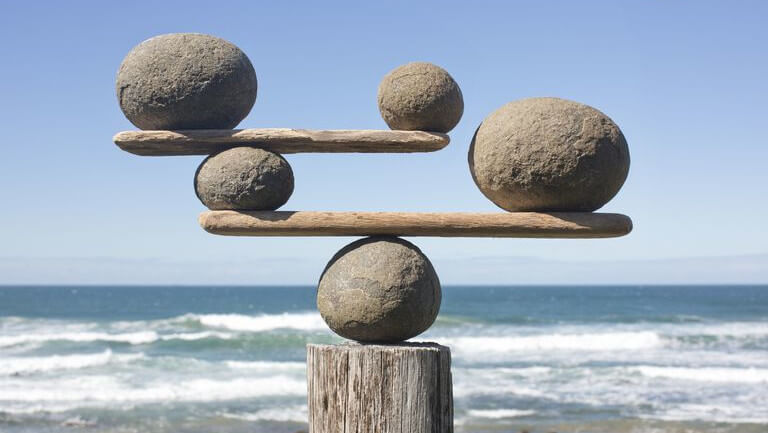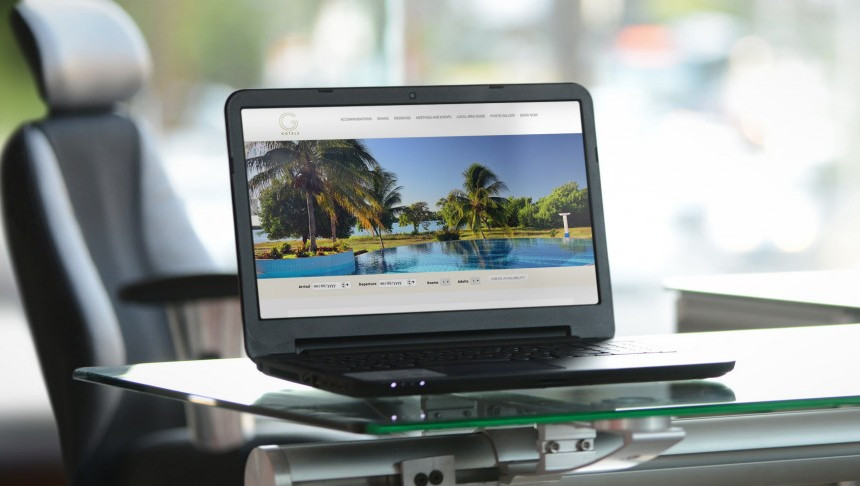Use the latest in hotel technology to create digital touchpoints for your guests, make them feel safe and comfortable, provide personalised service and implement new hygiene protocols.
NB: This is an article from Oaky
The Coronavirus outbreak brought new developments to parts of our lives that previously seemed unchangeable, simply because we’d become so used to a certain way of doing things.

Then, within only a few short days, new policies and restrictions turned what used to be exceptions, like working from home and only communicating via video calls, into daily routines. Hotel operations followed suit.
As properties reopen under strict regulations, we must come to terms with the fact that implementing new hygiene and safety protocols is the utmost priority, and this will change the guest journey as we know it.
To help you navigate this transition, here are a few tips on how you can adapt your guest journey to a post-COVID reality, where automation and process optimisation define a ‘new normal’ for the hospitality industry.
A smart guest journey at your hotel
While the guest journey will still consist of the pre-stay, stay and post-stay periods, all three will undergo significant transformations
Read on for key novelties to expect throughout a guest’s experience with your hotel.
Changes in the booking and pre-stay phase
► What we were used to seeing
Non-refundable rates, offered at a discount alongside more costly flexible rates, used to be the norm. Many hotels also welcomed guests from around the world and consequently dealt with seasonal demand from different markets and a variety of guest segments.
► How this could look in the future
With new rules and regulations making international travel a hassle (think quarantining upon arrival) for the foreseeable future, domestic travel is likely to see a surge. People have been cooped up at home for so long, that even a staycation now feels like an adventurous getaway.
Another trend that may grow more quickly now is multigenerational travel. Since extended families living in different cities or states haven’t been able to visit each other, they may want to make up for lost time and go on a trip together.
Finally, when researching and booking a hotel, cleanliness will be most guests’ number one priority. Brands with strong reputations who clearly communicate what they are doing to keep guests safe will become more attractive than ever.
► How to optimise your guests’ booking and pre-stay experience
- Flexible bookings: Offer more flexible booking options such as refundable rates and generous cancellation policies on your direct channel. Especially in the beginning, this will help with convincing potential guests to book, scoring you commission-free business.
- Localise marketing efforts: When marketing, a focus on your domestic market, particularly people who can reach you by train or car, will pay off. Reach this audience by localising your social media and optimising your content for domestic search. For example, stick to your local language and leverage public and school holidays.
- Showcase measures: Once a potential guest is on your website, they should immediately see why they should choose you over your competition. Highlight what you’re doing to keep your property clean and safe. Showcase your facilities and services in a way that makes them dream about spending their holiday with you to seal the deal.
- Answering FAQ: Setup a chatbot to support guests during their holiday research. This allows them to receive quick answers to FAQs and ask questions about your hygiene protocols, your dining options, kids’ activities and anything else they can think of. You’d be surprised how much a quick answer to these questions can boost your conversion rate.
Once a guest has reserved, a chatbot is also a great tool to pitch add-ons like airport transfers or early check-in. Wondering how that might work? Quicktext, one of our partners, does a great job with making this step quick, intuitive and guest-friendly. See it in action here.
* Example of a chatbot from Quicktext
- Pre-arrival stay personalisation: Lastly, once a guest has booked, let them take charge of customising their stay. Up-selling your guests with personalised deals and services stirs up excitement around a trip, giving your guests that many more things to look forward to.
By sending targeted pre-arrival messages via an up-selling platform like Oaky, you can promote deals that will make their stay more fun, memorable, relaxing or hassle-free. Allow your guests to make the most of their time with you all while boosting your ancillary revenue.
Changes in the in-stay phase
► What we were used to seeing
Heading to the front desk to check in was non-negotiable at most hotels, unless of course you were a VIP. Face-to-face interaction with staff was inherently unavoidable during arrival, departure and at hotel restaurants.
Daily housekeeping was seen as an absolute must.Guest sharing the gym with strangers or settling payments at reception were facilitated without a second thought. And of course, the fuller the hotel, the better.
► How this could look in the future
While these standard interactions went unquestioned before, hotel teams and guests will need to adapt to three types of physical distancing:
- Guest-to-guest
- Guest-to-employee
- Employee-to-employee
Unsurprisingly, this will impact how people interact with each other on-site, as well as how properties can provide service.
► How to optimise your guests’ stay experience
1. Remote services: Provide as many ‘remote services’ as possible to reduce guest-to-guest contact. This includes offering generously spaced tables in dining rooms, in-room entertainment like video games or movie night packages, bookable slots for the gym and plenty of distance between your beach chairs.
2. Remote check-in/out: Online check-in and check-out are perfectly suited to hospitality’s new needs, forming an important part of the contact-free guest experience. Keep your guests and staff safe by allowing guests to enter their details pre-arrival. This will save them time, effort and potential exposure to contaminants via physical touchpoints. When it comes to check-out, all they need to do is drop off their key and they can leave the property – it’s as simple as that.

*An example of a remote check-in and check-out by Mews, an innovative cloud-based PMS provider
3. Exclusive & in-room dining: The F&B department is another major touchpoint that will see substantial change. Revamp your offering to include breakfast, lunch or dinner boxes and no-contact in-room dining instead of open buffets or traditional restaurant service. For those dreaming of a special experience, look at using creative spaces in your property, like your Presidential Suite, a private garden or the beach, to offer exclusive dining packages.

4. Turning down housekeeping: While cleanliness is a higher priority than ever, guests may be reluctant to let attendants into their rooms once they’ve checked in. Make it easy for them to opt out of daily housekeeping service so they feel in control of their space and secure in the knowledge that they can request service when they need it.
5. Online communication: Of course, hotels need to maintain their service standards despite social distancing requirements. Mobile technology like direct guest messaging via Facebook Messenger or WhatsApp is a fantastic tool to make remote guest interaction quick, easy and effective, allowing staff to respond instantly. Make sure guests are 100% satisfied by making use of chatbots again. Just like during the booking process, chatbots can be used at this stage to promote the hotel’s services, answer FAQs and ask for feedback during the stay.

*Example of an AI-powered chatbot and messaging hub for hotels by Quicktext
6. Safe lunch breaks for employees: Your employees’ safety is just as important as your guests’. Some hotels have extended their cafeteria hours so staff can better space out lunch breaks, allowing their teams to maintain safe distance. Consider whether this approach might work with your property too. If the weather permits, offer them packed lunches to eat outside during the summer months.
7. Improving operational processes (online): In recent years, all-in-one hotel operations platforms like Hotelkit have emerged to help teams effectively communicate and collaborate via an intuitive interface. Technology helps to reduce physical contact points and facilitates social distancing in the hotel routine, which is of importance in today’s climate. Hotelkit allows new standards, procedures or guidelines to be communicated and implemented easily. Recurring tasks, like the hourly hygiene checklist, can be set, prioritised and allocated to a recipient, giving various users the ability to monitor progress.

* Example operational process of Hotelkit
Changes in the post-stay phase
► What we were used to seeing
In the past, the guest experience often ended as soon as check-out was complete. At most, guests received an email requesting feedback that often went unanswered as they were perceived as too cumbersome, or they were sent too late.
► How this could look in the future
Since more communication is likely to happen via mobile, both before and during the stay, guests are likely to be more open to communicating with the hotel via the same channels, even after they’ve checked out. This could provide a valuable opportunity to engage with your guests, thank them for staying with you, show them you value their input and encourage repeat bookings.
► How to optimise your guests’ post-stay experience
- Engage first – virtual hugs: Leverage your chatbot one more time to polish off your guests’ stay with a bit of warmth and frivolity. Let your guests know that the whole team is thankful for their support of your hotel. Here’s an example of a post-stay message you could send: “A virtual hug from the whole team! We can’t thank you enough for staying with us. It really makes a difference. Travel safe and we hope to thank you again!”.
- Online feedback: Ask for their feedback. What did they love? What could you have done better? If they were happy with your service, this is the perfect time to suggest they leave a review to help you get more traction online.
- Loyalty (for life): Consider creating a loyalty program for guests who are staying at your hotel during these difficult times. In the future, you could offer a discount for a future stay or organise an exclusive dinner for them. Were you able to rehire employees as a result of these early bookings? Let them know they helped make that happen. Making guests a part of your recovery journey in this way lets them feel like part of your hotel’s family and shows them how much you value their business – the perfect recipe for building lifelong loyalty.
Will you be facing a lot of changes in the coming weeks and months? Yes. Will it be a challenge to adapt to all this? Probably.
But remember: we’re all in this together. Network with fellow hoteliers and learn how they are making the most of this situation.
Ask your guests what they want and need from you, so you can best serve them.
And lastly, leverage the power of innovative hotel tech.





